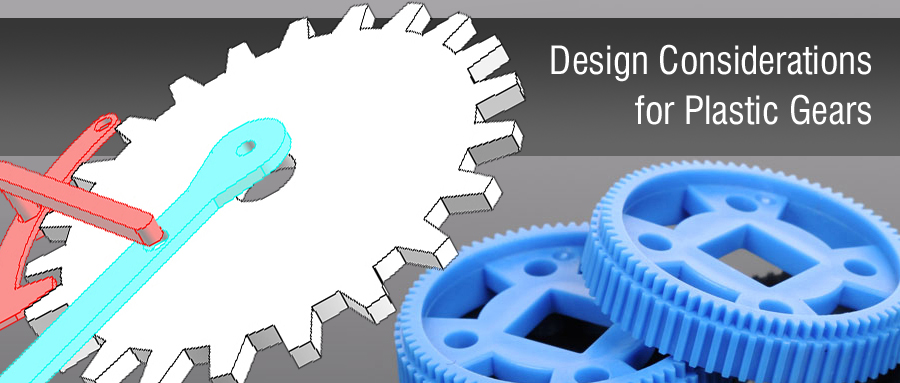
Plastic gears differ significantly from their metal counterparts, and as an engineer or a designer, it is important to realize the special considerations and issues associated with the plastic gears. The degree of attention required to details is more for plastic gear design as compared to metal gears, like the building up of heat resulting from hysteresis.
The fundamental difference in the design of plastic and metal gears is that metal gears are designed considering strength of a single tooth, whereas, plastic gears share loads between teeth. In fact, the better the load sharing, the better is the load bearing capacity, when it comes to plastic gears.
And as such, the allowable stress is more with increase in number of fatigue cycles, specifically when the tooth size is reduced. The stress increase in very little above a specific pitch due to the effects of size and other issues.
A good thermoplastic gear can be developed using following procedure:
- Determine the boundary conditions like temperature, load, velocity, space requirement as well as the environmental conditions where the gear will be utilized
- Study the effects of short term material properties on the initial performance levels
- Determine the long term properties of plastic when utilized in the specific environmental conditions and evaluate the performance levels for a longer duration or during the part life
- Calculate the stresses generated due to loads and speeds considering physical data
- Perform a comparison between the calculated values and values of allowable stress and modify the design accordingly to add the required safety factor
The failure of gears made up of plastic is often based on similar reasons that cause the failure in metal ones. This includes wear, scoring on the surface, plastic flow, pitting on the mating surfaces, fracture and fatigue. Moreover, the causes of these failures are also similar.
The root and the contact surface of the tooth are generally the regions with maximum stress for a loaded rotating gear. In case if lubrication is provided, bending stress also becomes a critical design parameter. However, non-lubricated gears wear before the tooth fails. As such, contact stress remains the prime factor while designing efficient plastic gears. Also, plastic gears design often involves a tooth root with full fillet radius, which avoids stress concentration when compared with metal gears.
For thermoplastics, the bending stress data is generally obtained from fatigue tests performed at specified pitch line velocities. As such, it is crucial to utilize velocity factor, especially in cases where the velocity is more than the test speed. Allowable stress can also be reduced by 1.5 times through continuous lubrication.
Similar to bending stress, correction factors are also required to determine surface contact stress. For example, when the pitch-line velocity is more, there is a need to include velocity factor. A factor is also required to consider variations in operating temperature, material properties as well as pressure angle. There is also a need of stall torque factor when designing thermoplastic gears, since the gears are subjected to high stall torque compared to normal loading torque. Moreover, plastic gears heat up and lead to hysteresis, when running at higher speeds, which can eventually lead the gears to melt.
To reduce such heating, one way is to reduce the peak stress by improving the tooth-root area according to the required torque transmission. Other way is to increase the gear diameter so that stresses on the teeth can be reduced. Moreover, using materials with better stiffness and less prone to hysteresis can also improve the operational life of plastic gears. The plastic stiffness can be improved by 25 to 50% by increasing the crystallinity levels of acetal and nylon.
The stiffness can also be improved by using fillers like glass fiber that can increase the stiffness of the plastic by 500% to 1,000%. However, fillers have a drawback; they reduce the fatigue endurance of the plastics. As such, engineers must consider this trade-off between fatigue life and minimal heat when choosing the plastic for gear design. Removing heat then is also an important factor to reduce failure due to hysteresis. To remove heat, fluid such as oil can be surrounded over the gear to improve heat transfer rates.





